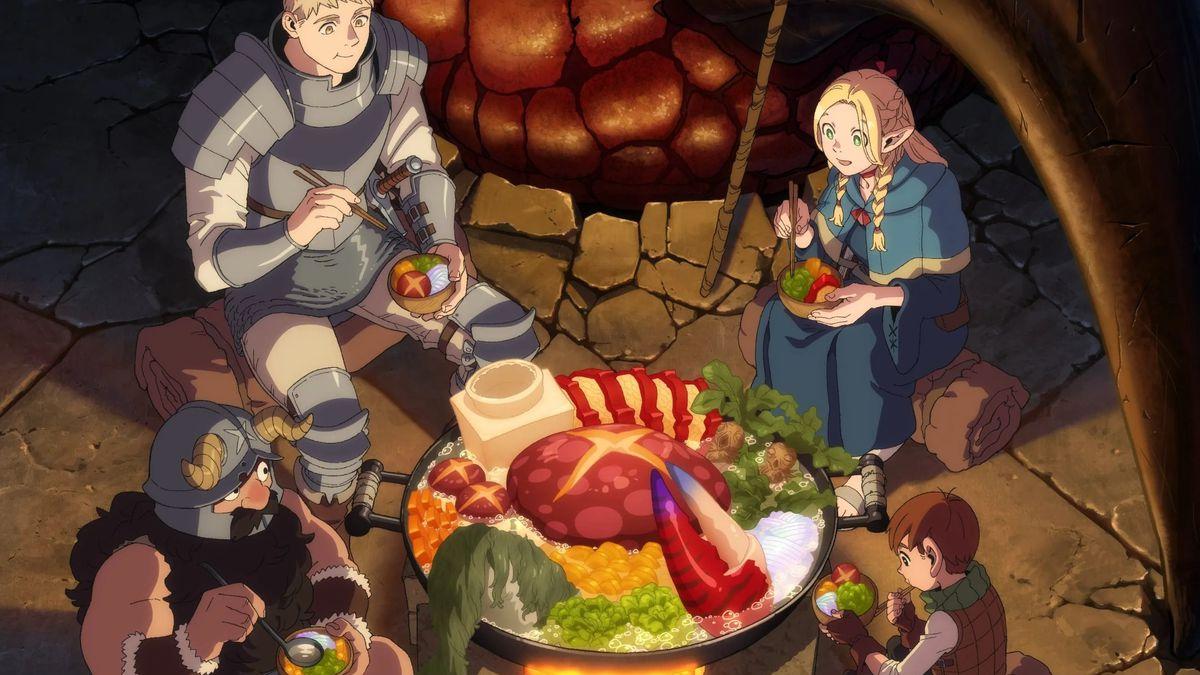
‘Delicious in Dungeon’ series review: Michelin-star anime proves monsters have never looked more delectable
The Hindu
In Netflix’s Delicious in Dungeon, the ethics of consumption are simmered to perfection
Fantasy anime has always been a sprawling buffet of oversaturated ideas, most of which seem unpalatable, tasteless or downright putrid. But Delicious in Dungeon (or its Japanese title Dungeon Meshi) has quietly emerged as a rare delicacy at the end of the spread. Brought to life by Ryoko Kui’s manga and animated by Studio Trigger under Yoshihiro Miyajima’s direction, the anime serves up a hearty blend of humour, heart, and RPG-inspired dungeon escapades, all seasoned with the most outrageous propositions: could we make a meal out of monsters?
The adventure begins with Laios, the affable (and most certainly neurodivergent) leader of a ragtag group of adventurers, who watches helplessly as his sister Falin is swallowed whole by a red dragon. With their pantry as empty as their purses, Laios hatches a plan to dine on the very monsters that haunt the dungeon? Armed with a tattered copy of the “Dungeon Gourmet Guide” and driven by his insatiable curiosity and encyclopaedic knowledge of dungeon fauna, Laios sets out to turn the dungeon into a beastly smorgasbord, with every creepy crawly he encounters becoming a potential entrée.
Laios’ band of companions is as unhinged as the dishes they prepare. There’s Marcille, the elven mage whose delicate sensibilities and ethical qualms make her the reluctant foodie of the group. Her frequent outbursts and wide-eyed horror at Laios’ gastronomic experiments are a source of constant amusement. Then there’s Chilchuck, the halfling thief whose knack for disarming traps is only rivalled by his wariness of the Laios’s choices, making him the group’s cautious critic.
But the true star of this culinary caper is Senshi, the dwarven chef whose expertise in cooking dungeon monsters turns grisly ingredients into gourmet delights. Senshi’s philosophy is rooted in a deep respect for nature’s balance, advocating a nose-to-tail approach where nothing goes to waste. His meticulous preparation methods and reverence for each creature he cooks reflect a utilitarian conservationism that serves as a commentary on the anime’s exploration of sustainability.
The juxtaposition of Marcille’s high-strung aversion to monster cuisine and Laios’ rabid (quite literally) embrace of it provides a rich vein of humour and conflict. Her face contorts to hilarious effect at the sight of a basilisk omelette, while Laios practically salivates over the prospect of cooking up a dragon steak.
Marcille’s wrestles with the moral indigestion of eating sentient beings, her disgust serving as a bitter garnish to the group’s survival tactics. This ongoing tussle between survival and ethics prompts viewers to chew over their own food choices, making the series a flavorful feast that cleverly spices up the conversation on the ethics of consumption.
Meanwhile, Chilchuck’s role as the practical, sceptical member of the party grounds the series in a sense of realism. His constant grumbling and cautious bites of Senshi’s culinary creations offer a perfect foil to Laios’s unbridled excitement and Senshi’s culinary zeal. His reluctant participation in the monster meals, often accompanied by dry commentary and hesitant nibbles, serves as a (failing) voice of reason to their antics.











